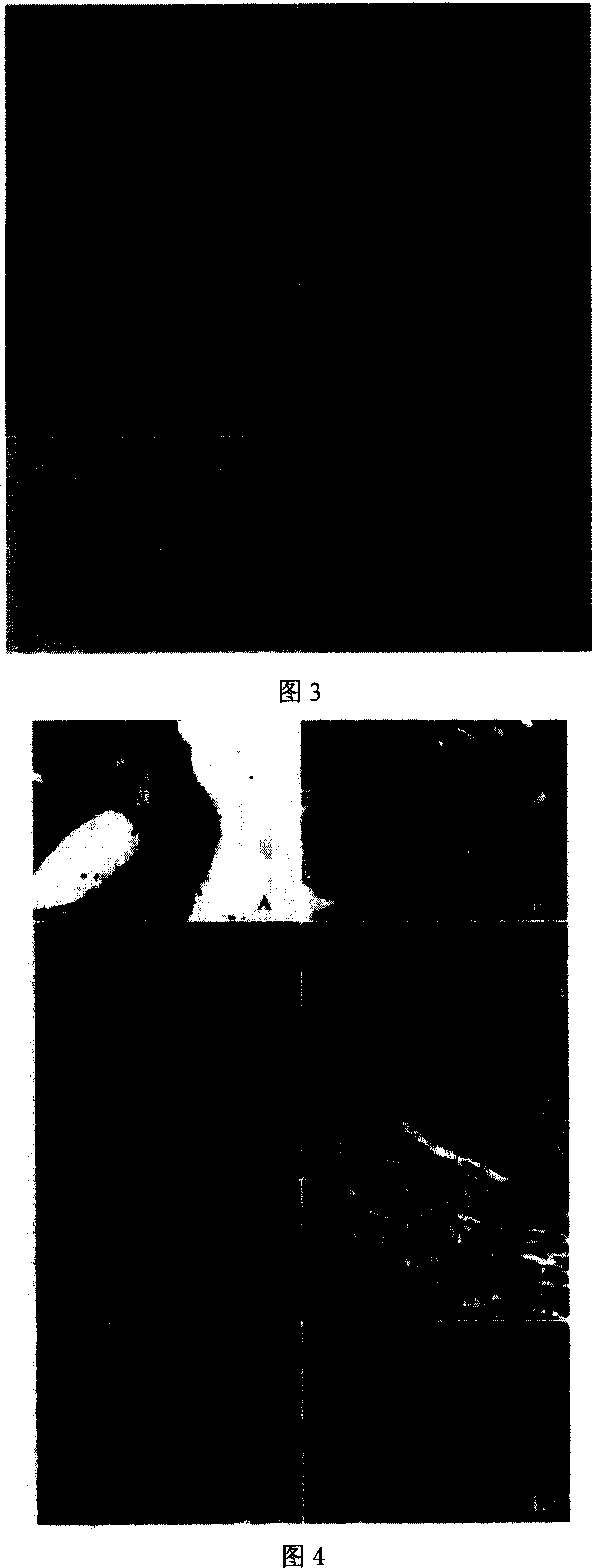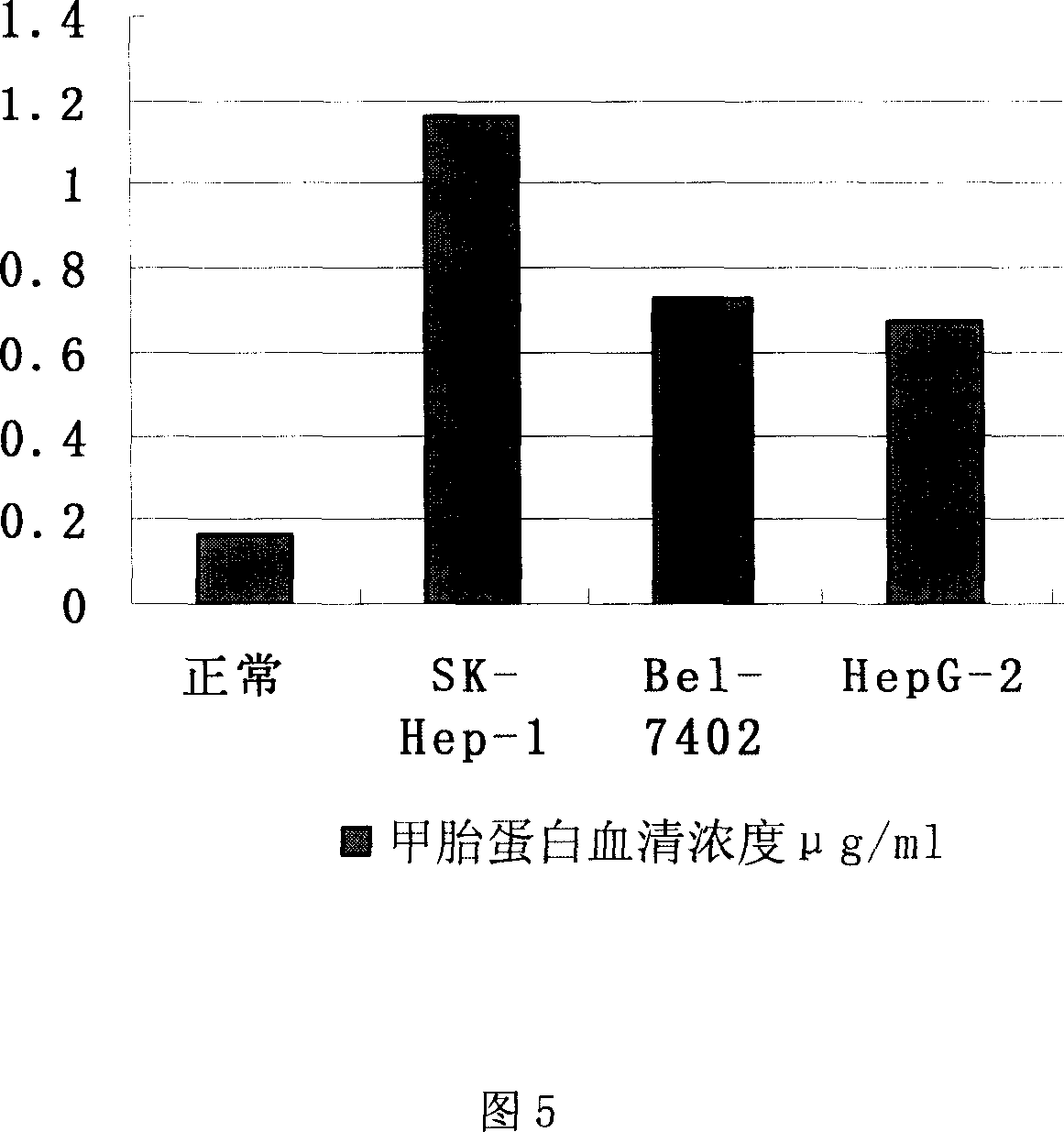In-situ transplantation process of constructing human liver cancer mouse model
A technology of mouse model and human liver cancer cell line, which is applied in the field of xenogeneic orthotopic transplantation to construct animal models of human liver cancer, can solve the problem of limiting tumor biology and the research and evaluation of the therapeutic effect of anti-tumor immune drugs, and cannot truly simulate liver cancer tumors Cellular immune response status, feeding and experimental requirements are high, to achieve the effect of prolonging the survival time with tumors, cheap animals, and large capacity to withstand cancerous ascites
- Summary
- Abstract
- Description
- Claims
- Application Information
AI Technical Summary
Problems solved by technology
Method used
Image
Examples
Embodiment 1
[0059] Example 1: Preparation of DiI fluorescent dye-labeled human liver cancer cell HepG-2 suspension
[0060] 1. Test equipment
[0061] Fluorescence microscope (NIKON ECLIPSE TE2000-U); cell culture incubator (SANYO, 2300TC); 0.22 μm syringe filter (MILLIPORE, USA);
[0062] 2. Test reagent
[0063] DMEM-H liquid basic culture medium (HyClone); premium fetal bovine serum (HyClone); fluorescent dye DiI (AnaSpec, Inc.); 0.25% trypsin (SINGAMA), etc.
[0064] 3. Test method
[0065] AFP-positive human liver cancer cell line HepG-2, purchased from Shanghai Institute of Cell Biology, Chinese Academy of Sciences, stored in liquid nitrogen, DMEM-H basic culture medium, 10% fetal bovine serum, subcultured in a 37°C 5% CO2 constant temperature incubator; 0.25 % Sterile trypsinization for passage.
[0066] Dissolve the fluorescent dye DiI in absolute ethanol to 2.0 mg / ml; filter and sterilize with a 0.22 μm disposable filter, and store in an airtight and dark place at room temper...
Embodiment 2
[0067] Example 2: Construction of orthotopic transplantation human liver cancer cell HepG-2 mouse model
[0068] 1. Test material
[0069] 30-gauge 50-μl glass microsampler (Shanghai Gaoxin Glass Instrument Factory); DiI fluorescent dye-labeled human liver cancer cell HepG-2 suspension, cryostat (MICROM HM 550); AO 820 microtome (American Optical Corporation ); paraffin (sangon), etc.;
[0070] 2. Test animals
[0071] Pregnant mice of the Kunming breed were purchased from the Experimental Animal Center of Shandong University. They were adapted to feeding in an SPF clean-level experimental animal room and waited for their birth. Three-day-old suckling mice were taken out as tumor-bearing receptors. Both males and females had an average body weight of 1.9g.
[0072] 3. Test method
[0073] 1) Take 3-day-old Kunming suckling mice, and disinfect the abdominal skin with alcohol.
[0074] 2) Clamp the neck of the mouse with the index finger and middle finger to fix the head of...
Embodiment 3
[0093] Example 3: ELISA detection of serum alpha-fetoprotein concentration changes in tumor-bearing mice
[0094] 1. Test material
[0095] Tumor-bearing mouse serum; Alpha-fetoprotein enzyme immunoassay kit (BioCheck, Inc); Alpha-fetoprotein antibody (LABVISON)
[0096] 2. Test method
[0097] (1) Preparation of cleaning solution for work: 20ml / bottle of concentrated cleaning solution, diluted with distilled water 1:20 before use;
[0098] (2) Adding samples: set 1 well of blank control, 2 wells of negative control and 2 wells of positive control, respectively add 50 μl of negative control and 50 μl of samples to be tested in corresponding wells;
[0099] (3) Enzyme addition: Add 1 drop (50 μl) of enzyme marker to each well except the blank control well, shake gently, and seal the plate well with transparent tape;
[0100] (4) Incubation: 30 minutes in a water bath at 37°C;
[0101] (5) Washing: Remove the liquid in the holes, fill each hole with washing liquid, let it st...
PUM
| Property | Measurement | Unit |
|---|---|---|
| Average weight | aaaaa | aaaaa |
Abstract
Description
Claims
Application Information
 Login to View More
Login to View More - R&D
- Intellectual Property
- Life Sciences
- Materials
- Tech Scout
- Unparalleled Data Quality
- Higher Quality Content
- 60% Fewer Hallucinations
Browse by: Latest US Patents, China's latest patents, Technical Efficacy Thesaurus, Application Domain, Technology Topic, Popular Technical Reports.
© 2025 PatSnap. All rights reserved.Legal|Privacy policy|Modern Slavery Act Transparency Statement|Sitemap|About US| Contact US: help@patsnap.com



